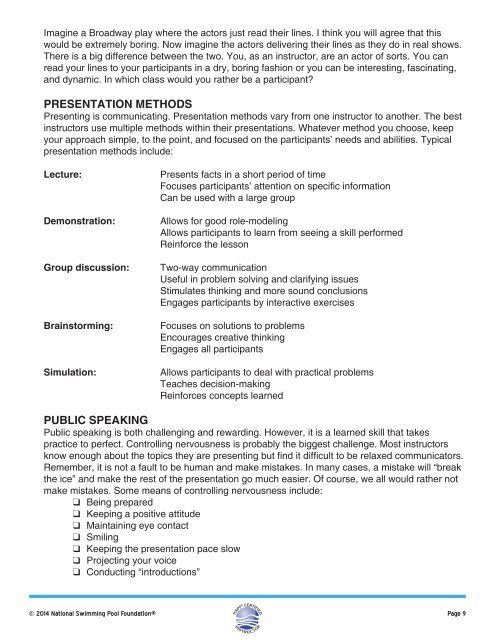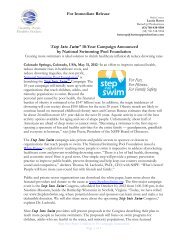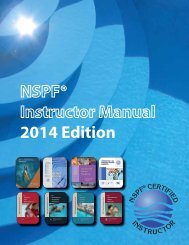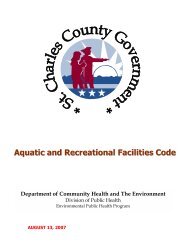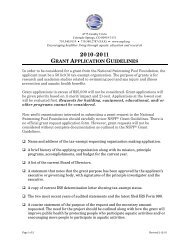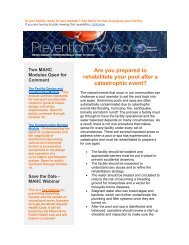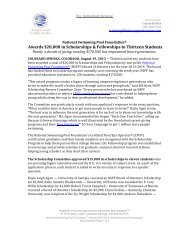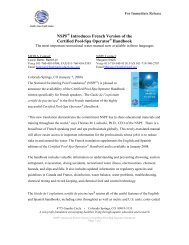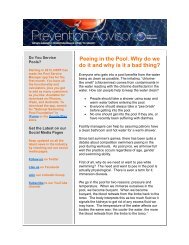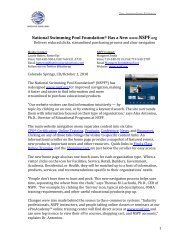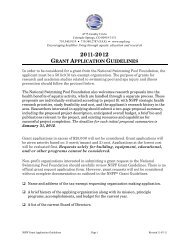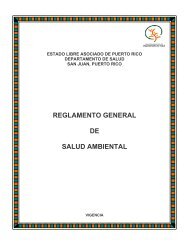English Instructor Manual (PDF) - Metric Version - National ...
English Instructor Manual (PDF) - Metric Version - National ...
English Instructor Manual (PDF) - Metric Version - National ...
Create successful ePaper yourself
Turn your PDF publications into a flip-book with our unique Google optimized e-Paper software.
Imagine a Broadway play where the actors just read their lines. I think you will agree that this<br />
would be extremely boring. Now imagine the actors delivering their lines as they do in real shows.<br />
There is a big difference between the two. You, as an instructor, are an actor of sorts. You can<br />
read your lines to your participants in a dry, boring fashion or you can be interesting, fascinating,<br />
and dynamic. In which class would you rather be a participant?<br />
PRESENTATION METHODS<br />
Presenting is communicating. Presentation methods vary from one instructor to another. The best<br />
instructors use multiple methods within their presentations. Whatever method you choose, keep<br />
your approach simple, to the point, and focused on the participants’ needs and abilities. Typical<br />
presentation methods include:<br />
Lecture:<br />
Demonstration:<br />
Group discussion:<br />
Brainstorming:<br />
Simulation:<br />
Presents facts in a short period of time<br />
Focuses participants’ attention on specifi c information<br />
Can be used with a large group<br />
Allows for good role-modeling<br />
Allows participants to learn from seeing a skill performed<br />
Reinforce the lesson<br />
Two-way communication<br />
Useful in problem solving and clarifying issues<br />
Stimulates thinking and more sound conclusions<br />
Engages participants by interactive exercises<br />
Focuses on solutions to problems<br />
Encourages creative thinking<br />
Engages all participants<br />
Allows participants to deal with practical problems<br />
Teaches decision-making<br />
Reinforces concepts learned<br />
PUBLIC SPEAKING<br />
Public speaking is both challenging and rewarding. However, it is a learned skill that takes<br />
practice to perfect. Controlling nervousness is probably the biggest challenge. Most instructors<br />
know enough about the topics they are presenting but fi nd it diffi cult to be relaxed communicators.<br />
Remember, it is not a fault to be human and make mistakes. In many cases, a mistake will “break<br />
the ice” and make the rest of the presentation go much easier. Of course, we all would rather not<br />
make mistakes. Some means of controlling nervousness include:<br />
Being prepared<br />
Keeping a positive attitude<br />
Maintaining eye contact<br />
Smiling<br />
Keeping the presentation pace slow<br />
Projecting your voice<br />
Conducting “introductions”<br />
© 2014 <strong>National</strong> Swimming Pool Foundation® Page 9


